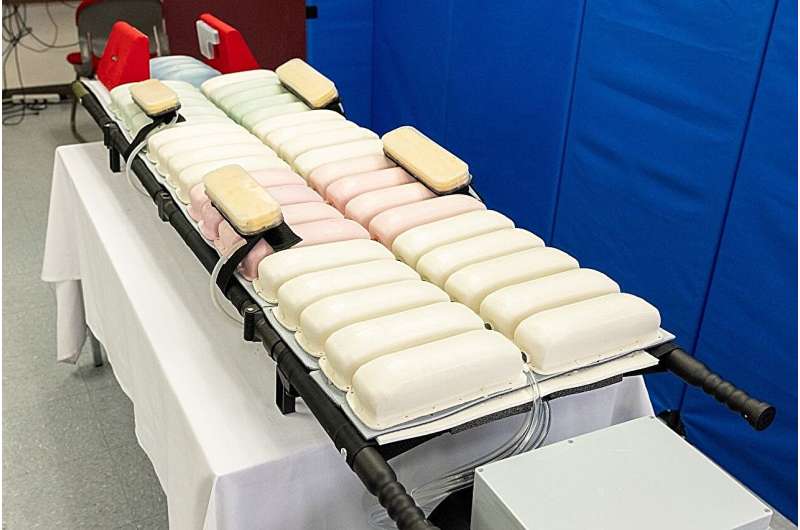A newly developed adaptive spine board (ASB) overlay aims to change that, offering an innovative solution to prevent pressure injuries and dramatically improve patient outcomes. Developed by researchers at The University of Texas at Arlington and UT Southwestern Medical School, the adaptive spine board sits atop a standard stretcher or spine board, using air-cell technology to redistribute pressure more effectively than traditional evacuation surfaces.
The team’s study, newly published in the Journal of Rehabilitation and Assistive Technologies Engineering, shows that the ASB outperforms other immobilization options.
“The ability to dynamically adjust pressure so that no vulnerable body regions experience excessive weight is a breakthrough for medical evacuation,” said Muthu B.J. Wijesundara, principal research scientist at the University of Texas at Arlington Research Institute, the applied research unit of UTA that specializes in applying cutting-edge technologies to real-world engineering problems. “This innovation could set a new standard in casualty transport protocols.”

